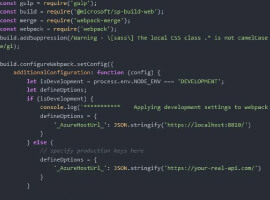SharePoint migration is often considered to be a responsibility of an IT department or external SharePoint developers. However, this ‘leave-it-to-IT’ task can play a trick on companies that go for a SharePoint cloud migration.
Whether you migrate a SharePoint solution to the platform’s later on-premises version or move your deployment to the cloud, you have to physically relocate the solution’s content and features to a new environment. No wonder that migration seems to be a purely technical task to be fulfilled by SharePoint developers and administrators exclusively.
Yes, this approach can only work if you migrate your solution without any changes, which shouldn’t become a common rule. First of all, because it’s reasonable to take up SharePoint migration to improve the existing solution, not just to move it as it is. Second, it won’t work for cloud migrations. Don’t get it wrong: developers are able to perform migration to SharePoint Online or Office 365 without involving end-users, but once the migration is done, get ready to face various issues related to how the solution is used. Here are just a few reasons why end-users’ involvement is highly recommended.
- SharePoint Online (and Office 365 in general) isn’t the same as SharePoint On-Premises. When migration is completed, users will have to deal with an absolutely new working environment, handling new UI, features and capabilities. From filling in personal profiles to using workflows, users can come across a lot of inconveniences if functional differences remain unexplained.
- Data protection and management issues can be critical. Data protection is still an issue for almost 60% of companies that go for cloud migration (AIIM report). It means that users (not developers) will have to decide whether to entrust their data to the cloud or not, and how they will manage it.
- Cloud SharePoint solutions become more user-centric. Microsoft makes big steps towards easier customization of SharePoint solutions. The SharePoint Virtual Summit 2017 welcomed communication sites that will join the suite at the end of the year and will allow users to create and manage sites on their own. However, with ever more capabilities, users will have to take more responsibilities.
- SharePoint mobile apps become a working standard. Now when mobile apps are available for SharePoint Online users, SharePoint developers should ensure the migrated solutions are appropriate for mobile use, as well as guarantee the relevant degree of protection for corporate data exchanged via mobile devices.
When to engage end-users, and what benefits it can bring?
Optimally, SharePoint specialists should start collaborating with end-users already at the migration planning stage. To make this collaboration experience productive, it’s reasonable to select a limited focus group of employees to interact with SharePoint developers. Early collaboration will allow for achieving several objectives.
Objective 1. To revamp your existing solution
Pre-migration activities can include SharePoint monitoring in order to detect functional issues to be fixed, reveal outdated content, unused features and even sites that should be rather removed than migrated. This preliminary step will not only help to clean up the solution, but also to shorten and simplify the migration process.
Objective 2. To prioritize business-critical content and features
Monitoring of a SharePoint On-Premises solution also helps to identify critical features that should be available in the migrated cloud solution. At this stage, employees from different departments and specializations should collaborate to voice their needs. It will help IT specialists to understand if they have to extend the migrated solution with additional features to address employees’ daily working needs.
Objective 3. To improve SharePoint UI and UX
User adoption is a frequent challenge for many SharePoint owners, so migration is your chance to work on it. Employees’ feedback can help the tech team to understand what UI and UX issues exist in the current solution and then think how to avoid them in the new solution.
Objective 4. To determine the approach to sensitive data management
Objective 5. To implement optimal collaboration tools
While migrating to Office 365, you will have to decide what collaboration tools will suit your business needs and collaboration style best. This choice can be crucial for the migration process. For example, if a team uses a SharePoint on-premises team site, but now wants to use Microsoft Teams, developers will have to offer a feasible way of migrating the existing content and adapt new collaboration tools at the same time.
Post-migration collaboration is important too
Collaboration with end-users is also required in the post-migration period for educational purposes. Your IT department or third-party SharePoint consultants can carry out dedicated training sessions to present the migrated solution and show employees how to use it effectively. During training sessions, it is recommended to:
- Make sure that employees understand SharePoint Online and Office 365 clearly, and know how to use each particular feature.
- Explain to employees how to manage team sites and other collaboration tools to support productive and secure teamwork.
- Define SharePoint Online and Office 365 security rules especially if employees collaborate with external users actively, and add them to collaboration groups.
- Show how to use the solution on mobile devices so that employees can stay productive even if they aren’t in the office.
It’s all about improving SharePoint user adoption
The AIIM report mentioned above provides an interesting fact: speaking about lessons learned during their SharePoint projects, 68% of respondents said that for SharePoint projects to be successful, they shouldn’t be left to IT only. While this stats touches SharePoint implementation mostly, it can be spread to SharePoint migration projects, especially if we consider how challenging it is for end-users to benefit from a migrated solution.
A collaborative style of SharePoint migration can become an essential step to get a higher user adoption of the migrated solution and make it really popular among employees. It will also help employees to better understand SharePoint’s advantages, get a grasp of all the platform’s benefits and stay satisfied with the solution they use.









 Using a SharePoint Online list as a Knowledge source via ACTIONS in Copilot AI Studio
Using a SharePoint Online list as a Knowledge source via ACTIONS in Copilot AI Studio
